Artificial Intelligence (AI) is no longer a distant, futuristic concept. From ChatpGPT To Copilot, there’s been an explosion of artificial intelligence technology. The biggest impact is on this generation of kids. Both Gen Z and Gen Alpha are growing up alongside rapid developments of artificial intelligence that shape their daily lives.
Because of their unique position, it’s important to prepare and educate kids about AI. We’ve added summer AI camps and introductory AI classes so kids can gain a solid foundation in these concepts. We also use AI to teach coding and important skills like pattern recognition, problem-solving, and machine learning.
Parents might be wondering how to explain AI to kids? Why is it important to teach AI now? And how can kids learn AI? In this article, I’ll answer these questions and give you the next steps to teach your child AI.
What is AI for kids?
Artificial intelligence, AI, is the ability for computers to learn and perform tasks like humans including reading, writing, speaking, seeing, and understanding.
For example, if we see an image of a cat, we know that it’s a cat. How? We’ve learned through many experiences what a cat looks like and what it’s called. Basically, we know because we’ve seen a lot of cats!
Can the computer learn to do the same thing? The process of getting machines (computers) to learn is called machine learning. We teach the computer by showing it a lot of pictures of cats and things that are not cats. After the computer has learned, it gets smarter and shows intelligence. That intelligence is called artificial intelligence.
For kids, artificial intelligence can be broken down into understandable concepts like:
- Pattern Recognition: AI is very good at recognizing patterns. You could ask your child to identify objects around them and look for patterns in numbers, colors, or shapes. Machines also recognize patterns in data. AI would use these patterns to, for example, identify a cat in a picture.
- Learning From Experience: AI can “learn” from experiences to get better at tasks. Just like kids learn in school when they get an answer wrong on a test. When AI identifies a dog as a cat and gets the answer wrong, it learns from that.
- Decision Making: AI systems can make decisions based on the information they receive. Kids might decide what they’re wearing based on the weather that day. Based on the shape, color, and context of an image, AI has to decide if an image is of a cat or not. AI uses the data presented and previous experiences to decide the best course of action.
- Training: Training AI can be compared to teaching a pet new tricks. If you give your puppy a treat every time you ask it to sit, it will learn to sit for the reward. You have to show AI what to do by giving it examples and rewards when it gets it right. AI learns by being trained with lots of examples until it knows how to perform a task.
Coding in Artificial Intelligence
Coding is closely related to AI because artificial intelligence software is created using coding languages. So, working with and understanding AI relies on a foundation of learning how to code. In our core coding track, we start students in middle school and high school start with coding with in Python.
Python is one of the most popular languages to code AI and its simple syntax makes it easy for kids to learn. Other languages used to code artificial intelligence systems include Java, C++, Prolog, and LISP.
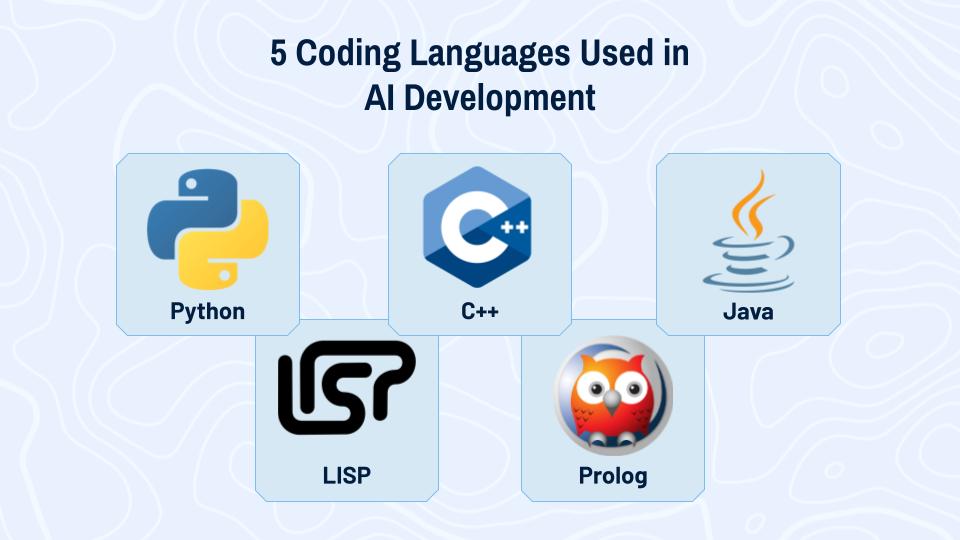
Everyday Examples of AI for Kids
Kids and teens interact with AI every day and oftentimes without realizing it. When you’re teaching your child about AI, it’s important to show them relatable examples. By showing them all of the ways AI is used in their lives, it can peak their curiosity and inspire their interest.
Here are some everyday AI examples for kids:
- Maps and navigation (Google Maps, Uber): when we’re on the road, artificial intelligence analyzes data like traffic patterns, road conditions, and your preferences. That’s how our maps can show us traffic areas and suggests best and alternate routes to the destination.
- Text Editors or Autocorrect (Microsoft Word, Visual Studio Code): If kids are using Microsoft Word for homework, AI is automatically detecting grammar issues and providing suggestions. It also learns from specific patterns to pick up the words used most frequently and help spell them.
- Search and Recommendation Algorithms (YouTube, Amazon): AI analyzes user data and predict their preferences and behaviors for these websites. When kids see a new YouTube video suggested for for them, it’s based on their search history, videos watched, and other factors. It’s personalized for them by AI.
- Video games (Fortnite, Rocket League): In games like Fortnite, kids might not know they’re playing against a bot, or an AI generated player. The expert AI systems in games can generate a bot that acts like a real player. AI is also used to create the dynamic maps that change with each game.
- Facial recognition (Google Pixel, iPhone): This popular feature on new phones uses AI software to analyze the geometry of your face and create a unique template of it. When you try to unlock your phone, the image of your face is compared to the template to determine a match.
- Smart assistants (Alexa, Siri): When kids ask Alexa a question, it uses AI to understand the question and respond to it in a human-like way. Everytime they interact, the AI learns about them and uses that information to predict what they might need int he future.
- Chatbots (Discord, ChatGPT): A lot of kids are using Chatbots for homework help. AI enhanced chatbots use techniques such as natural language processing (NLP) to help understand eacg message. The AI automates a response by scanning documentation and past conversations to deliver an appropriate answer quickly and accurately.
Those are just a few examples of how AI touches our children’s daily lives. There’s also artificial intelligence being used in toys, education, and healthcare for kids.
Toys
On the market now are smart toys that learn from children and provide an adaptive and responsive play experience. These toys can learn from and interact with the child during activities or move and perform tasks. Most AI toys focus on being able to hold natural conversations with children.
Education
In education, AI is being used to personalize learning. AI can guide adapt to students with personalized, immediate feedback or assistance. This helps kids move at their own pace and makes much of the learning asynchronous. As a result, kids learn better and faster with the help of AI.
Microsoft co-founder Bill Gates recently said that generative AI chatbots can teach kids to read in 18 months rather than years.
Healthcare
Pediatric healthcare also benefits from AI. AI can be used to interpret medical images to support diagnoses and treatments. It can also suggest proper medication dosages for kids based on more than just their body weight and interpret data to recommend more precise medications for kids.
AI is constantly developing. While AI is still evolving and admittedly has limitations, it’s the future of technology. It will be commonplace as our kids grow up and being familiar with AI will make them tech literate.
Benefits Of AI For Kids
Artificial intelligence is beneficial for kids on many levels. Understanding AI changes a child’s interactions with the world around them. It makes them more aware and safe. By learning about artificial intelligence early, kids gain valuable skills for college, career, and life.
Why should kids learn AI?
- Improves STEM Education
- Promotes Tech Literacy
- Teaches Problem Solving And Critical Thinking
- Fosters Creativity And Innovation
- Growing Career Opportunities
1. Improves STEM Education
AI draws from all four STEM subjects because of its relationship with fields like robotics, coding, and biology. While learning about artificial intelligence, kids naturally explore and apply these fields in a cohesive way, rather than studying them in isolation. This kind of hands-on learning promotes deeper understanding because kids are applying AI to solve problems.
Recommended: 26 Reasons Learning to Code Benefits Your Child
2. Promotes Tech Literacy
Learning AI helps kids understand how different technologies work and enables them to be informed users rather than passive consumers. Kids need the ability to use, manage, and assess technology safely, effectively, and responsibly. Experimenting with AI makes it feel less daunting to get involved with emerging technologies and new ideas. It can also get kids more interested in technology, and other STEM topics.
3. Teaches Problem-Solving and Critical Thinking
AI encourages kids to approach problems in a structured and methodical way. They learn how to analyze data, recognize patterns, and make predictions, all of which are essential components of problem-solving. AI-powered challenges, such as creating an AI system that can play a game or control a drone, promote critical thinking. By working through AI problems, kids develop resilience, learn to troubleshoot, and build confidence in their ability to tackle complex challenges. Essential skills for any future career.
4. Fosters Creativity and Innovation
Whether they are designing AI-powered art projects, music, or developing AI-based games, kids can experiment using AI tools. This not only fosters creativity but also helps kids see STEM as a field where they can bring their own unique ideas to life. Learning how AI can generate new ideas and solutions sparks innovation and allows children to explore their creativity in new ways.
5. Growing Career Opportunities
The U.S. Bureau of Labor Statistics expects employment of computer and information technology occupations to grow 13% from 2020 to 2030. AI is transforming industries like healthcare and manufacturing, but there are millions of jobs projected to go unfilled without more education in STEM. Students who learn coding and AI early will have a significant advantage. For those students, the career opportunities in AI are aplenty and your child may even hold a job that doesn’t exist today.
How Can Kids Learn Artificial Intelligence?
Now that you know why AI is important, let’s discuss fun and educational ways your child can learn about AI.
- AI classes and summer camps
- AI activities and projects
- AI websites
- AI games
AI Classes & Summer Camps
Classes and camps offer a structured way for kids to learn foundational AI concepts. These are best for kids who want teacher-led instruction and live support.
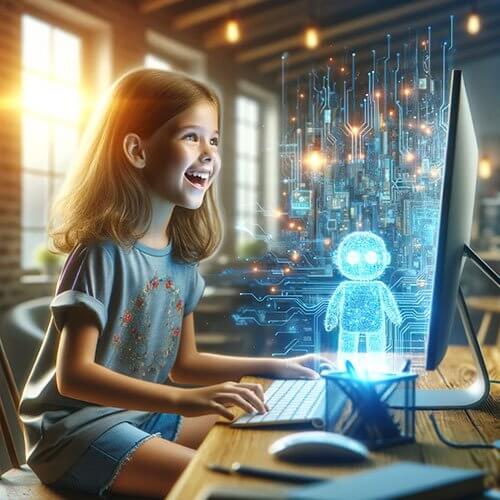
AI and Machine Learning: The Basics (Ages 8-10)
Elementary-aged kids are curious and eager to explore. In this summer camp, students build a web app that can recognize what it sees in pictures! They will learn how to train an AI model and use their AI model in their app by writing their own code. This is an opportunity for younger students to get hands-on experience.
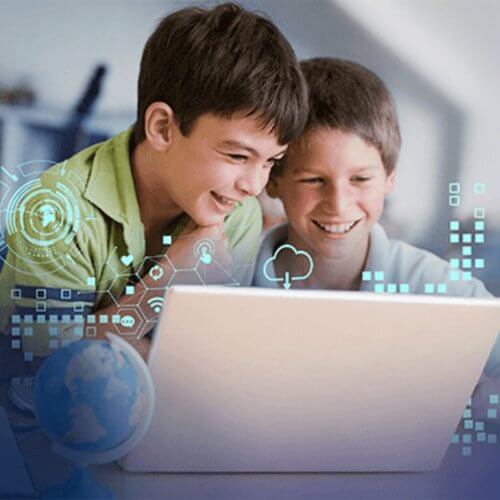
AI and Machine Learning: The Fundamentals (Ages 11-13)
In this course, middle school students apply Artificial Intelligence to solve real-world problems. They will train, test, and refine a Machine Learning model equipped with Computer Vision capabilities to recognize patterns in images.
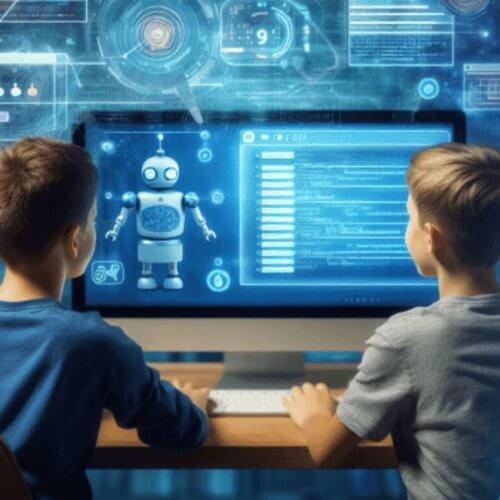
AI and Machine Learning: The Foundation (Ages 14-18)
Teens in high school learn about AI by developing and refining a Machine Learning model capable of identifying patterns in images. They use code to integrate this model into a web application and gain practical experience in applying AI solutions.
These AI classes specifically teach kids about AI concepts, but to have a solid foundation, consider starting with coding classes for kids.
Hands-On AI Activities for Kids
Working on AI activities is an engaging and hands-on way to learn. Start with simple projects based on your child’s age and skill level. These activities are suggested for beginners:
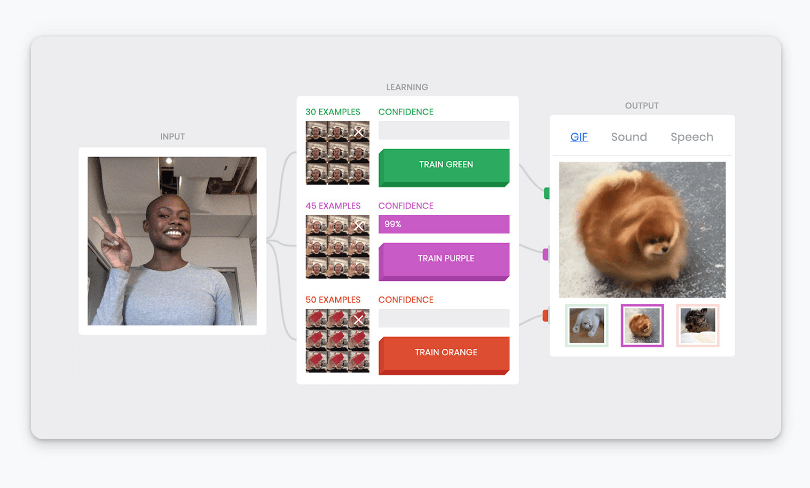
Train an AI Drawing Bot (Ages 5-7)
Using Teachable Machine, kids can train a drawing bot that recognizes doodles and creates simple drawings. This project helps them understand how AI can recognize patterns and mimic human-like behavior.

Create a Simple Chatbot (Ages 8-12)
In Scratch, kids can build a simple AI chatbot that can respond to questions. They can train the chatbot to recognize certain phrases and give specific responses. This project teaches them the basics of natural language processing.
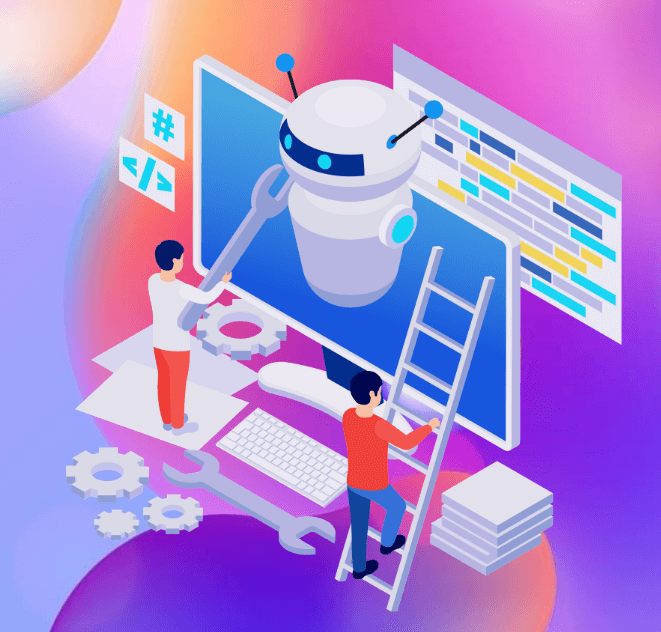
Develop a Game Using AI (Ages 13+)
RAISE AI playground is a programming platform based on Scratch language with AI extensions. Kids can use computer vision to develop a game where the characters responds to their hand signals. This allow kids to explore real-world applications of AI in an interactive way.
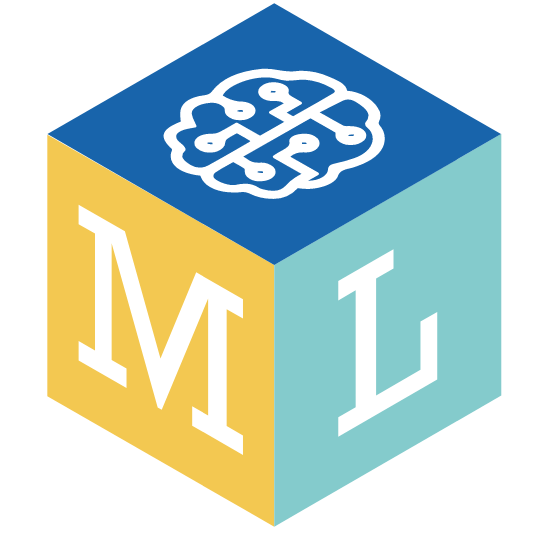
Teach the Computer a Game (Ages 13+)
Teach a computer to play a game at Machine learning for kids. Kids can collect examples, train the computer to recognize the examples, then make a game using Scratch. There are examples of pre-trained models and step-by-step tutorials. This activity teaches kids how machine learning systems work.
See more AI activity ideas for kids.
Play AI Games
Gamify your child’s learning with these AI-powered games.
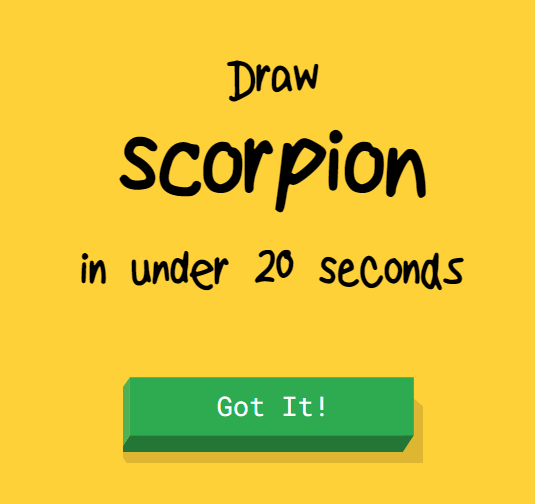
Quick Draw
This game is similar to Pictionary, but the computer is guessing. Kids will draw and a neural network tries to guess what they’re drawing. They can also help teach this model by adding your artwork to the world’s largest doodling data set.

Shadow Art
Kids can try their hands at shadow puppetry with a little help from AI. They’ll create a shadow puppet for the camera to represent their Zodiac sign.
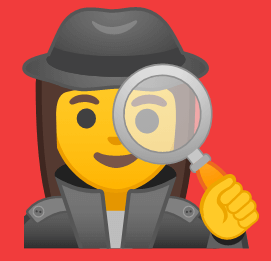
Emoji Scavenger Hunt
In this game, kids have to locate the emoji shown to them in the real world with their phone’s camera. A neural network will try to guess what it’s seeing.

FreddieMeter
Kids can try to sing like Freddie Mercury in the karaoke-style game. AI-powered singing challenge to find out how close your timbre, pitch, and melody are to Freddie’s.
AI is the Future for Kids
The potential of AI for kids is only beginning to surface. It’s a field that is growing rapidly and has applications to many real-life situations.
Today’s kids are interacting with AI every day, so why wouldn’t they be the ones to make the next big breakthrough?
If artificial intelligence interests your child, learning to code is a great first step. Take a coding class for kids to build a foundation in computational thinking prepare your child to learn AI. Enroll in an AI class for kids and start your coding journey today.
